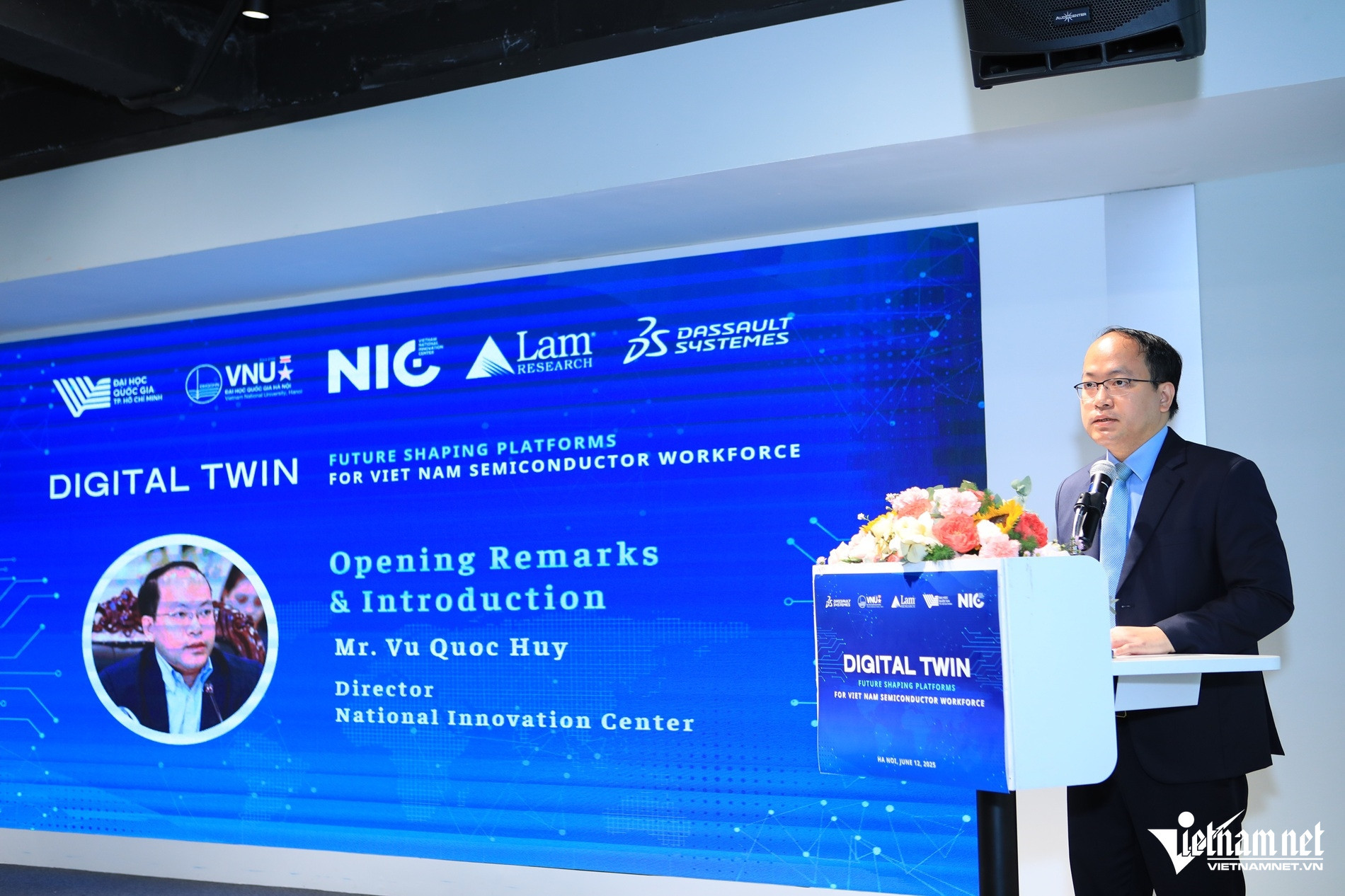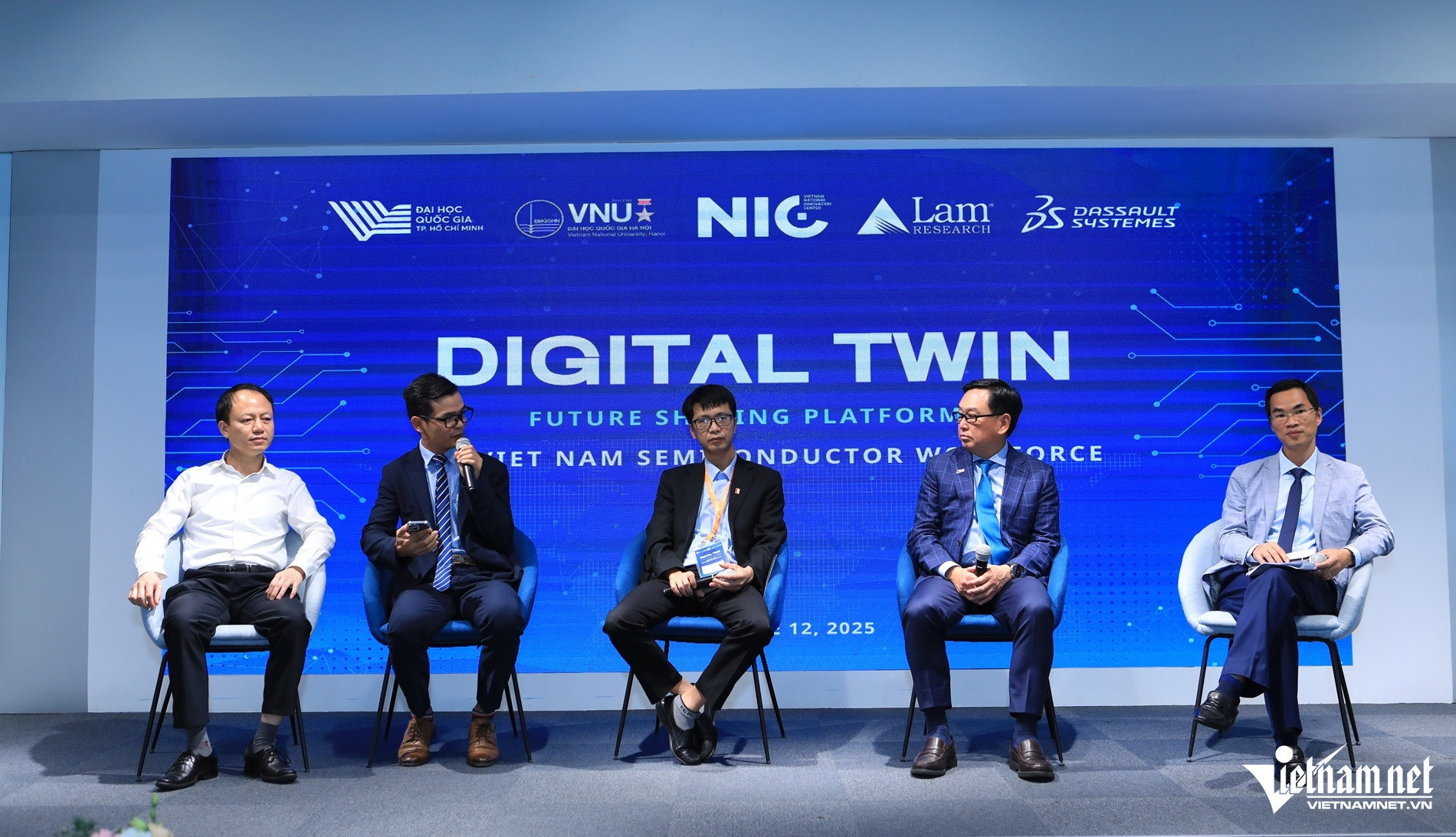The announcement was made during the seminar "Digital Twin shaping the future of semiconductor workforce," held on June 12 at the NIC headquarters, with representatives from Lam Research, Dassault Systèmes, Vietnam National University, and Hanoi University of Science and Technology in attendance.
According to Andrew Goh, Vice President and General Manager of Lam Research Asia-Pacific, the company will provide the Semiverse solution to training institutions in Vietnam. This digital twin technology connects global innovation hubs, allowing students to access machinery and conduct remote experiments.
Meanwhile, Dassault Systèmes presented its SEMI UNIV + RSE digital twin platform, which creates opportunities for semiconductor education by linking the physical and virtual worlds. Brian Lo, Director of Dassault Systèmes Vietnam, said the solution addresses critical challenges in the semiconductor industry amid digital transformation.

Vu Quoc Huy, Director of the NIC, welcomed the contributions of Lam Research and Dassault Systèmes, calling the partnership a “foundational milestone” in building Vietnam’s semiconductor training ecosystem. He emphasized how digital twin technology helps reduce investment and operational costs while granting access to advanced equipment models in simulated environments, enhancing training quality to meet industry needs.
Academia and industry must collaborate
Experts from both semiconductor companies and universities also discussed the "Three Houses" model - State, School, and Enterprise - as a framework for building Vietnam’s semiconductor talent pipeline.
Vietnam stands out in the region for its abundant and high-quality human resources. Investing in education and reskilling is a strategic approach to capture opportunities for tech transfer, foreign investment, and sustainable economic growth through science and innovation.

Prof. Dr. Tran Xuan Tu, Director of the Institute of Information Technology at Vietnam National University, and Prof. Dr. Nguyen Duc Hoa, Vice Rector of the School of Materials Science at Hanoi University of Science and Technology, emphasized the key role of universities in developing Vietnam’s semiconductor workforce. Despite having top professors and talented students, universities face challenges such as outdated curricula, high costs for lab infrastructure, and limited shared resources.
Given these constraints, partnerships with the semiconductor industry and international academic institutions are seen as effective solutions.
Nguyen Duc Hoa proposed a model where universities provide foundational knowledge and companies deliver on-the-job training. Agreeing, Tran Xuan Tu noted: “Companies focus on manufacturing, so we must support them by generating quality ideas - but we also need support from the industry to train students.”
Participants also emphasized the importance of collaborating with countries with advanced semiconductor expertise to facilitate technology and knowledge transfer.
From an enterprise perspective, Andrew Goh highlighted the value of close university-industry collaboration in integrating virtual platforms into curricula. He urged the government, universities, and businesses to jointly identify and invest in key R&D-driven projects with strong commercialization potential and available funding.
According to Vu Quoc Huy, the NIC serves as a bridge between the State, academia, and businesses in building Vietnam’s AI and semiconductor ecosystems. Digital twin technology, he reiterated, will optimize investment, reduce operational costs, and improve training to meet business needs more effectively.
Du Lam